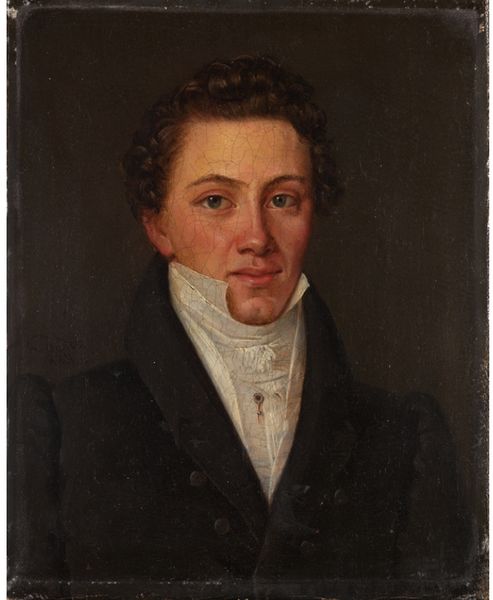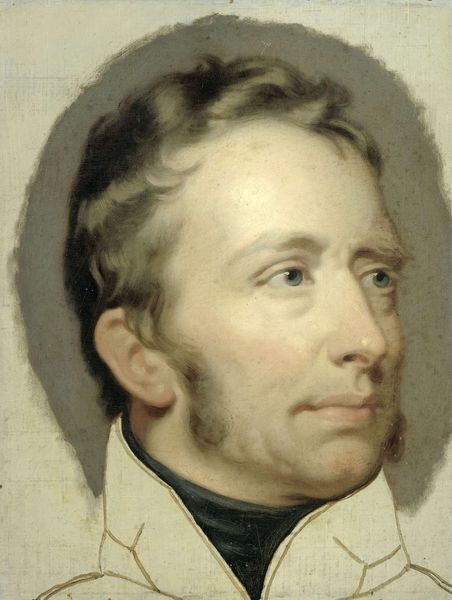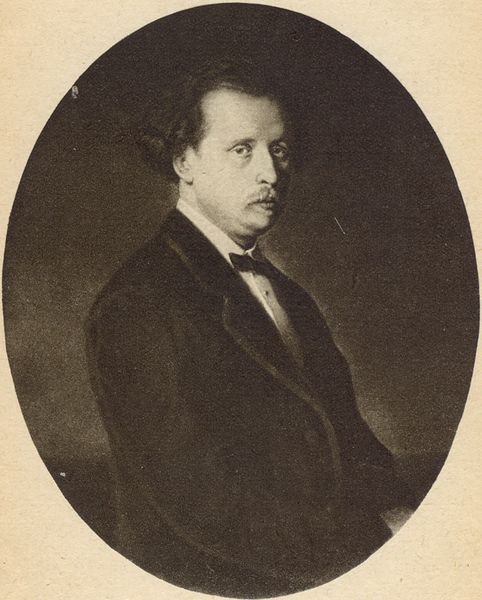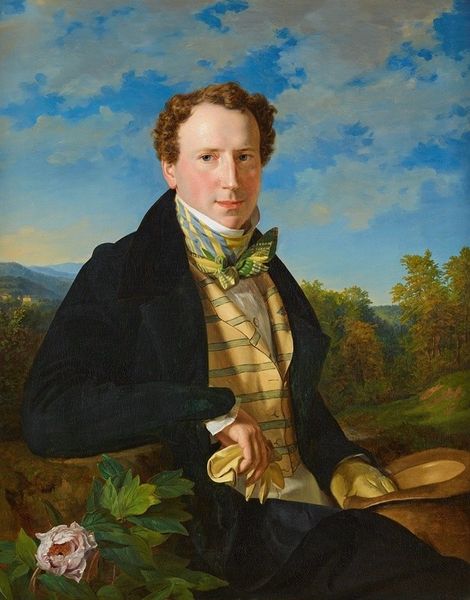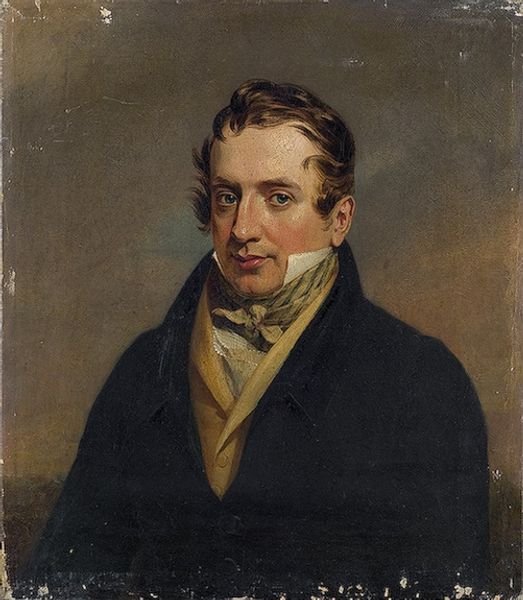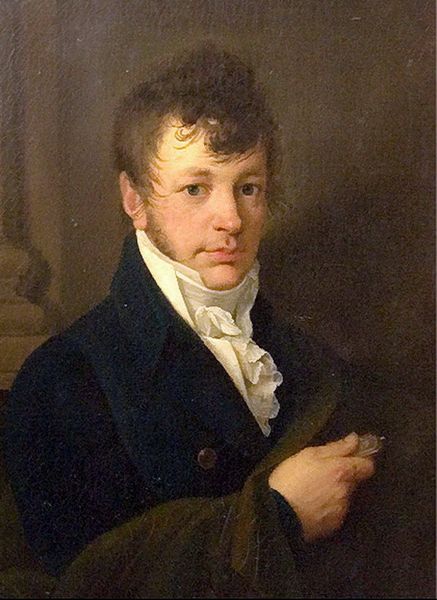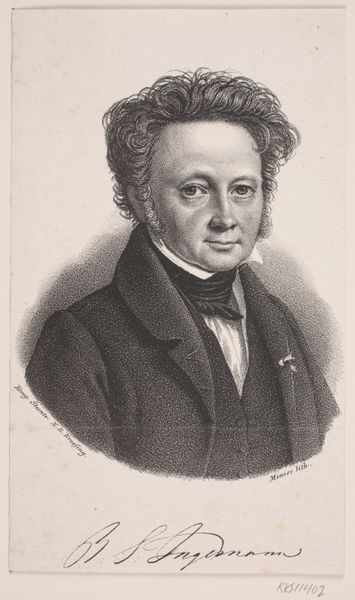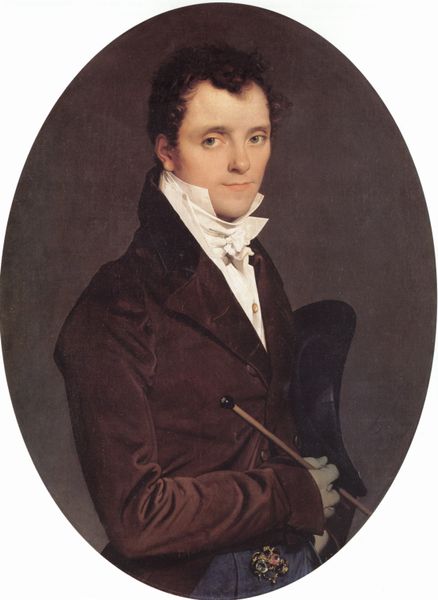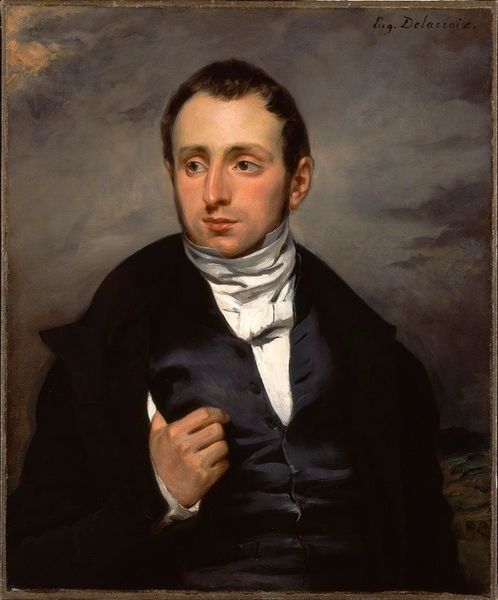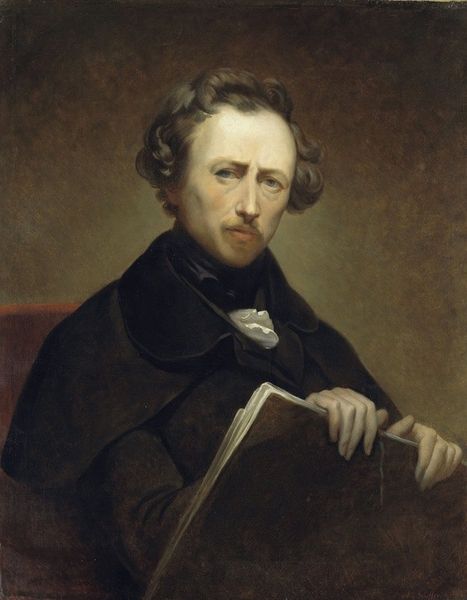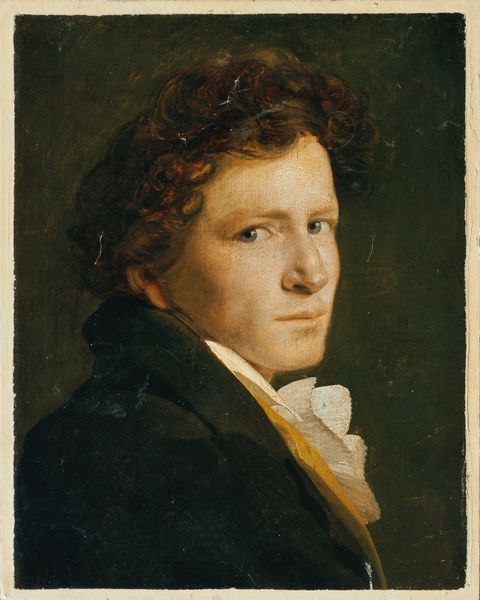
painting, oil-paint
#
portrait
#
painting
#
oil-paint
#
figuration
#
romanticism
#
academic-art
#
realism
Dimensions: 38 x 30.2 cm
Copyright: Public domain
Editor: So, this is Francesco Hayez's "Portrait of Giuseppe Roberti," created in 1819 with oil paint. The subject’s direct gaze is very striking. What's your take on this piece? Curator: Well, seeing this within the context of the early 19th century, the portrait isn't just a likeness but an assertion of status and identity. Look at the subject’s attire. Do you think that sartorial display suggests anything about Roberti’s position or aspirations within society? Editor: It certainly looks like he has money. A simple black suit, perhaps, but high quality? And he is in a position of power as he confidently gazes out towards us. It has that very academic feel to it, following those very established aesthetic trends. Curator: Precisely. Hayez was deeply involved in the academic art world, and the Romantic movement was also building. But was Romanticism solely about individual expression? Can't it also serve social and political purposes? It seems that his expression goes far beyond self. How might Hayez have used this image to construct Roberti's public persona, given the socio-political climate? Editor: Interesting. Perhaps portraying Roberti as a man of seriousness and integrity reflected certain social values that were considered essential during the post-Napoleonic era? He seems very buttoned-up; respectable! Curator: Exactly! Now, think about how this image might function within a museum setting today. Whose stories are amplified and whose are silenced through these displays of power? Editor: I suppose the museum’s choice to showcase this suggests which figures it considers historically significant and deserving of continued recognition. It certainly provides an understanding into not just his persona but the period of time too. Curator: Yes, and it prompts us to question those curatorial choices and the ongoing relevance of these historical figures. So, that changes the role of this artwork as well. Editor: It makes you consider what message is trying to be shared by everyone from the painter to the gallery. Curator: And how our interpretation shapes it again and again. That's the fascinating, and complex, legacy of art, right?
Comments
No comments
Be the first to comment and join the conversation on the ultimate creative platform.
